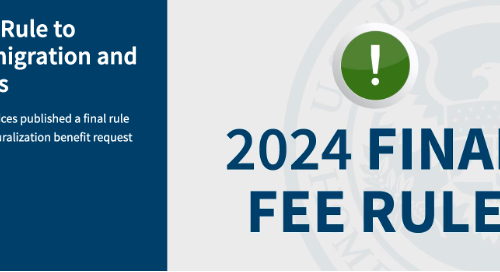-
K-1 Fiancé(e) Visa and Protection Under the Violence Against Women Act (VAWA)
In this post, we will explore two special cases in family-based immigration: fiancé(e) visas and protection under the Violence Against Women Act (VAWA). If you are a U.S. citizen and engaged to a foreign national, you can file a fiancé(e) petition, so your fiancé(e) can get a visa to come to the U.S., also known as the K-1 visa. This visa allows your fiancé(e) to enter the U.S., and you would have to get married within 90 days of your fiance(e) arriving in the U.S. To apply for a K-1 visa, the U.S. citizen petitioner must first file a Form I-129F, Petition for Alien Fiancé(e), with the USCIS. Once the…
-
Can Working Without Authorization In the U.S. Prevent You From Getting A Green Card?
Working without authorization in the United States is a serious violation of U.S. immigration law, and can lead to you not being able to get a green card in the future. However, if you are married to a U.S. citizen and you’re getting your green card through your marriage, or you’re an “immediate relative” of a U.S. citizen, you can be forgiven for working without authorization assuming you did not claim to be a U.S. citizen when you applied for the job. This scenario comes up all the time with my clients, and it’s always something they worry and ask about, but the immigration laws actually automatically forgive this if…
-
Which One Processes Faster? A Fiance(e) Visa or Spouse Visa?
I meet with many people who ask me if they should do a fiance visa or spouse visa if their significant other is not in the U.S. and will process at a U.S. consulate. Generally speaking, the fiance visa will be faster if the goal is to be together in the U.S. as soon as possible. Remember that once your fiance comes to the U.S. with the fiance visa (K1 visa), you must get married within 90 days of your fiance entering. Once you are married, the green card application can be filed, and your fiance would remain in the U.S. while that is processed. Eventually, an interview will be…
-
What You Should Know About Adding Beneficiaries for the Fiancé(e) Visa
If you are a U.S. citizen, there are two ways you can bring your significant other to the U.S. to get a green card (AKA lawful permanent residency). You can read more about the difference in a blog post I had written by clicking here. In this post, I am going to talk about adding beneficiaries to a fiancé(e) visa. For a child to be included as a beneficiary and to get a K-2 visa, and eventually, a green card, under his or her parent’s fiance(e) visa petition, the child must under 21 years old and unmarried. Some people confuse this and think that in order for a child to…
-
New Policy for the I-751 Petition to Remove Conditions
On November 30, 2018, USCIS published new guidance on interviews at the I-751 stage (you can read more about what the I-751 is here). This policy went into effect on December 10, 2018, and applies to all I-751s received on or after that date. The significant change that is occurring is that if the principal petitioner was not interviewed at the stage of when the beneficiary first received the two-year conditional residency, then there will be an interview at the I-751 stage with USCIS. The type of situation this would apply to is where the principal petitioner petitioned for a spouse, and the spouse goes through the U.S. consulate abroad…
-
Understanding the Spouse Visa and Fiancé(e) Visa
Comparing Spouse and Fiancé(e) Visas Let’s say you are a U.S. citizen engaged to marry someone from Chile and hope to marry them in the U.S. Perhaps you are a lawful permanent resident that has been married to a Canadian for one year. You want to live together in the U.S. but are uncertain about the process. This post will give you a general overview of each process and the respective filing fee costs. Another thing to keep in mind is that processing times are always subject to change without notice. If you prefer to have a set date for your wedding, the spouse option would be a better idea…
-
The I-751 Petition to Remove Conditions Explained
When a person obtains lawful permanent residency status (aka LPR status or gets a green card) through marriage, he/she may be considered a “conditional” lawful permanent resident. This means that the green card is good for 2 years versus the traditional 10 years. Why is this you may ask? This is a way for the U.S. government to weed out marriage fraud. They want to make sure a person did not get married for the sole purpose of getting a green card. There have been numerous news stories about marriage fraud rings where a foreign-born person will pay tens of thousands of dollars to a U.S. citizen to marry him/her…
















